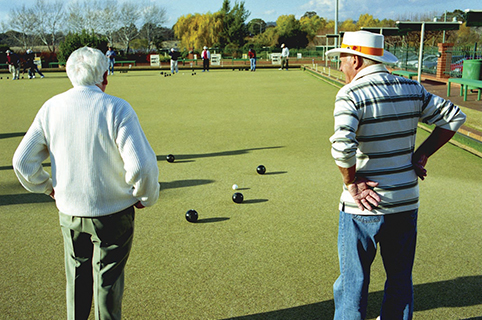 Work together
Work together
Respite will work most effectively if you can work with the person for whom you provide care to make respite arrangements that you both consider to be attractive and valuable.
In some cases, especially in more advanced dementia, involving the person with dementia in all of the decisions and planning may not be possible. In this case, you will be left to advocate for the type of services you think will work for both yourself and them. You will then need to determine what length of notice and what type of information will best suits the person with dementia about the upcoming respite experience.
It will be important to reassure them if they are anxious that you are feeling
positive about the respite, even if you may be feeling anxious yourself.
Plan ahead
Plan for a positive respite experience. This should include thinking about preparation for yourself and the person for whom you care in regards to what you will be doing during the respite period.
Some people with more advanced dementia may find new environments and new people unsettling, so trying to arrange respite experiences early in the care situation can help so that there is time to adapt to the change.
Start small
Start with small breaks and build up to longer ones to gain confidence about the experience. It may be useful to share some initial time with the person with dementia and the respite service provider prior to the first respite experience or during the initial episodes of care.
Communicate with respite service provider staff
- Discuss with staff the type of respite that is available and what will work best for you and the person with dementia.
- Communicate your needs and the needs of the person with dementia clearly and openly
- Give important information to the respite service provider such as the individual likes and dislikes of the person with dementia. This will help staff care for them more easily and will help minimise any changes.
- Share information about the life of the person with dementia (such as sending a life-story or photo album or photo board).
Check the Tools and Resources that can help you to think through that type of information might be important to communicate with different types of respite services.
Share with others
Get some practical ideas by talking with other people in a similar situation about ways they’ve managed to make respite a positive experience. Join a carers support group.
Keep trying
Consider some informal respite strategies. Incorporating respite experiences into your life can be an adjustment for carers and people with dementia. It can take time to build a sense of trust. If you’re not happy with your first respite experience talk to one another and the provider about your concerns and try again. It can take time for you, the person with dementia and the provider to establish an activity or routine that will work for you all. If at first you don’t succeed, try again. If you decide a particular service isn’t right for you after some persistence then you may also need to consider your alternatives.

